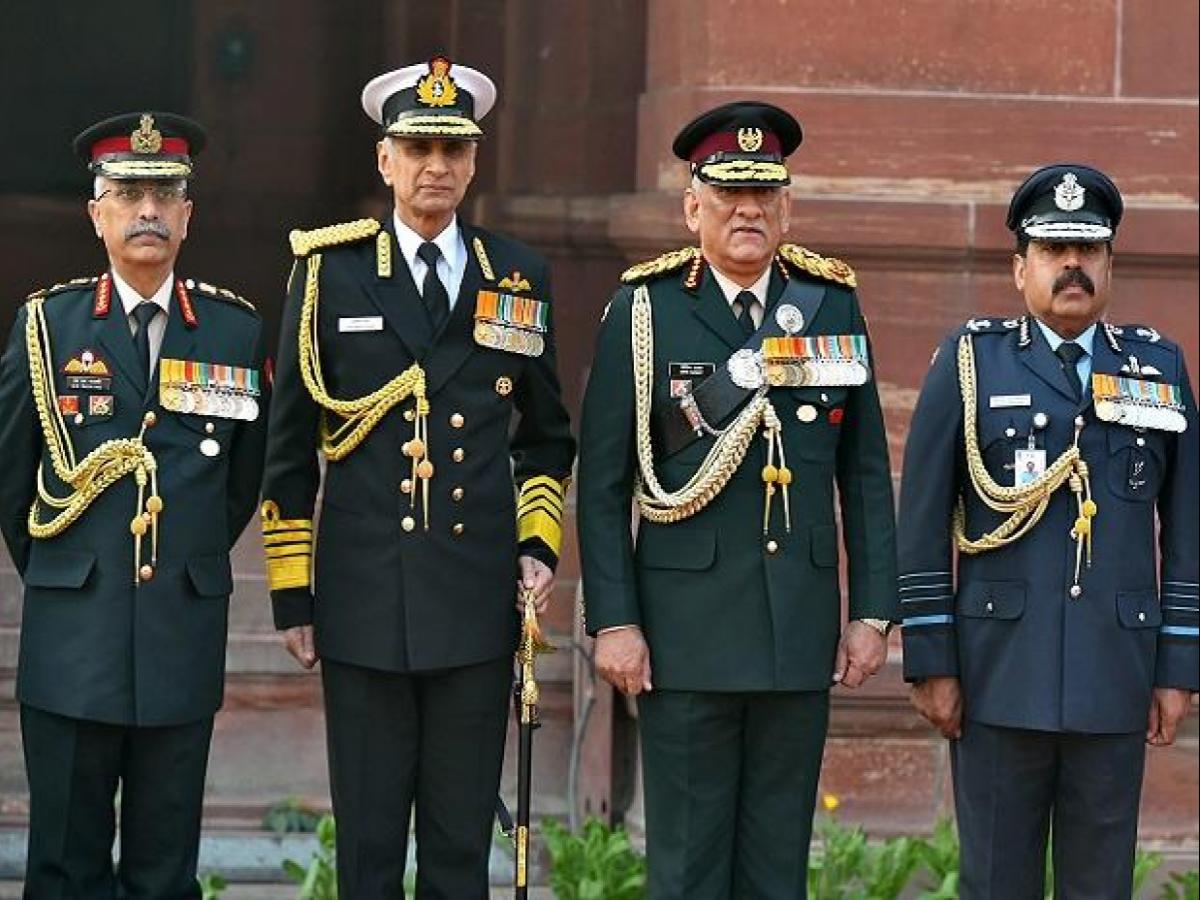The delays in decision making and implementation in South Block on defence acquisition and doctrinal issues by military-civilian bureaucracy is dragging India’s chance to be the leader in military-industrial complex.
Addressing the Defence Services Staff College (DSSC) at Wellington in Tamil Nadu on August 29 on “Defence Reforms in shifting National Security Paradigm”, Union defence minister Rajnath Singh said that his ministry was considering “integrated battle groups” to fight against the enemies. He said under this concept, extremely lethal brigade sized agile and self-reliant fighter formations will be made.
While defence minister Singh is pro-reform and pro-military, his statement is also a revelation on how mired the Indian armed forces are in bureaucratic red tape. They are no different, perhaps worse, from the civilian bureaucracy in first taking the decision and then in implementing them. In fact, it is seen that in some cases, the military technology moves to a more advanced level while the military-civilian bureaucracy is still mulling on acquiring the previous version of the technology. Just like the Indian Constitution, the defence acquisition manual, with over 600 pages splattered with archaic words of the imperial past, is perhaps the longest written document in the military world.
The concept of self-contained integrated battle groups was agreed to by the Army top brass nearly two decades ago after mobilisation of the Indian military under Operation Parakram against Pakistan immediately after the December 13, 2001 terror strike on Indian Parliament by Jaish-e-Mohammed terrorists. As many as eight integrated battle groups were meant to replace the lumbering three strike corps of the Indian Army, which were based on World War II concepts of dedicated offensive and defensive formations. The integrated battle groups were at the heart of the “Cold Start ” war doctrine of the Indian military, where the troops would be agile and prepared to go on offensive from the word go. The idea was that wars in the 21st century would be instant and would not give time for military preparation. Agile focused forces with defined war objectives would take the unprepared enemy by surprise was the concept that was validated way back in the 1761 Third Battle of Panipat, which changed the history of India.
Just like the integrated theatre battle groups are being discussed and debated ad nauseam by the military and civilian brass, there have been hurdles put in place for the formation of the theatre commands as no service chief wants to let go of his fiefdom. For them, theatre command is a loss of power for individual military forces with the post of now exalted chief reduced to training and procurement under the new concept. And all central governments including those in the past tend to be on the right side of the military just like they are with the Indian farmers.
While it is nobody’s case to demean the Indian military and exploits of the Indian forces, it is just that reforms in military take more time than even the civilian set-up with seniority-based bureaucrats and brass sending even the files pertaining to urgent acquisitions and decisions on a merry go round in the South Block and service headquarters. For them political leadership changes at best after a decade but they, and this includes the military brass, are around for three to four decades. It is another matter that neither the technology waits for them nor the revolutions in military concepts. But does the military-civilian brass of the defence ministry care?
Just like the Army, the Navy is wrapped in its own cocoon when it comes to human resources or acquisitions. While the military industrial complexes of the world are moving towards nuclear attack submarines, the NHQ after a decade has come up with qualitative requirements or what is called QRs for six air independent propulsion submarines, which firmly shows the door to Defence Research and Development Organization (DRDO) on grounds of not having a two-year sea proven experience of Air Independent Propulsion (AIP) technology. The DRDO-developed AIP is land proven and validated by the best in the world in submarine design and development. The DRDO has other issues, but that is a topic for another day.
However, the technology of diesel submarines has shifted from AIP to lithium ion batteries, which are more efficient and have longer sub-surfaced endurance than traditional lead acid submarines. Japan’s Taigei class of lithium ion battery submarine has already been commissioned this year and reports indicate the new batteries are technology of the future as they are operationally far better than the AIP submarine. This means that the Indian Navy’s AIP submarines, if and when they are built, tested, and commissioned, will be outdated in technological terms on the date they are put out at sea. And a decade later another defence minister will perforce have to extoll the virtues of the commissioned AIP submarine. The same is the case of third aircraft carrier in the era of stand-off weapons and ship killer missiles.
The Indian Air Force bureaucracy is no different. They are still stuck on fighter aircraft numbers based on Chairman, Chief of Staff Committee approval that they should have 42 squadrons. With the onset of highly capable S-400 air defence systems, armed drones and swarm drones with the PLA air force, the way forward would be to rationalize the fighter requirements, but it is virtually impossible to convince the IAF brass.
While Prime Minister Narendra Modi and his national security planners are aware of the gaps in the military-civilian decision making and the threat it poses to much required Atmanirbhar Bharat, the seniority and not merit based defence ministry brass is killing the initiative due to lack of speed in decision making and implementation. It is the bureaucracy and not the political leadership that will let down the “Jai Jawan, Jai Kisan and Jai Vigyan” mission. Time for old wine in a new bottle is over.





































